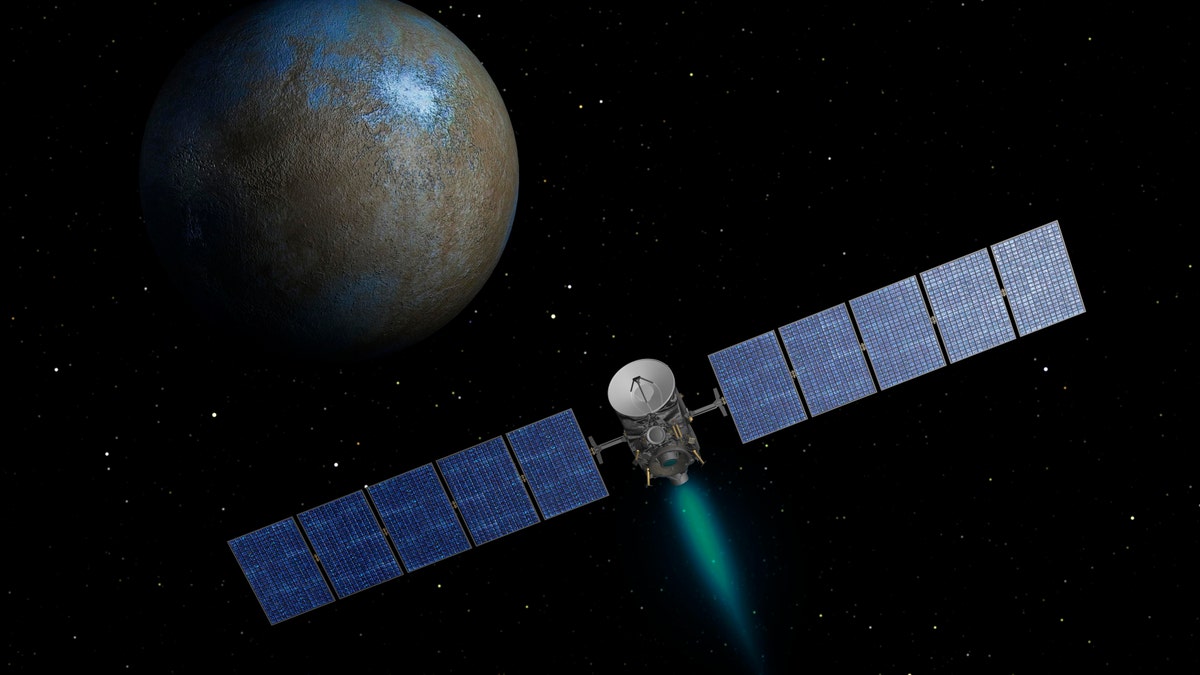
NASA's Dawn spacecraft heads toward Ceres as seen in this artist's conception. (REUTERS/NASA/JPL-Caltech/Handout via Reuters)
NASA’s Dawn spacecraft is scheduled to enter Ceres’ orbit early on Friday, becoming the first ever probe to successfully visit a dwarf planet.
The rendezvous with Ceres’ gravity will take place around 7:30 a.m. ET, according to NASA’s Jet Propulsion Laboratory (JPL) in Pasadena, Calif., which is managing the mission.
“It’s a gentle handoff from the Sun’s orbit to Ceres’ orbit,” a JPL spokesman told FoxNews.com.
Ceres, which lies between Mars and Jupiter,will be 310 million miles from Earth at the time of Dawn's arrival.
Dawn’s antennas, however, are not scheduled to be in contact with Earth at the time of the rendezvous, but will be communicating with NASA shortly afterwards. “We have a scheduled pass with NASA’s deep space network that begins about an hour later,” said the JPL spokesman.
Launched in September 2007, Dawn explored the giant asteroid Vesta for 14 months in 2011 and 2012, and began its final approach to Ceres in December. The Dawn mission is scheduled to end in June 2016, at which time the spacecraft will remain in Ceres’ orbit.
"Dawn is about to make history," said Robert Mase, Dawn project manager at JPL, in a statement released on Monday. "Our team is ready and eager to find out what Ceres has in store for us."
Scientists hope that NASA’s investigation of Ceres will boost our understanding of how the solar system formed.
Images of Ceres have already revealed craters and unusual bright spots that scientists believe tell how Ceres formed and whether its surface is changing. NASA says that as Dawn spirals into closer and closer orbits around the planet, researchers will be looking for signs that these features are changing, which would suggest current geological activity.
Since Jan. 25, Dawn has been delivering the highest-resolution images of Ceres ever captured, and they will continue to improve in quality as the spacecraft approaches, according to NASA.
The dwarf planet has an average diameter of 590 miles and is the largest body in the main asteroid belt and is believed to contain a large amount of ice. Ceres is estimated to be 25 percent water by mass.
Sicilian astronomer Father Giuseppe Piazzi spotted Ceres in 1801 and was the first object discovered in our solar system’s asteroid belt.
Initially classified as a planet, Ceres was later called an asteroid, and designated a dwarf planet in 2006.
Follow James Rogers on Twitter @jamesjrogers
